Marketing attribution provides marketers the insights they need to make data-driven decisions.
Do you struggle to change your marketing strategy because you don’t have enough data to prove it’s time to try something new? From getting budget sign-off, making new hires to experimenting with new channels, it can be hard to make the case without data.
In this blog, we share how Ruler Analytics can help you:
So, let’s dig in.
Ruler Analytics is a marketing attribution tool that supports marketers to create data-driven decisions.
Here are some key ways Ruler can help you optimise your marketing strategy
First, let’s start with the basics.
Attribution allows you to track every call, every form, every live chat session. In fact, it just about tracks everything. From new leads, to how they engage with your website, you can see key actions being taken and how your marketing influences them.
Let’s use an example.
A user clicks on your website from an organic search. If they convert (no matter how), Ruler will track that conversion and their marketing data. So, in your reports, you’ll be able to see that it was an organic search that led to the conversion.
And, if that user visited you ten times before converting, you’ll be able to see those sessions too.
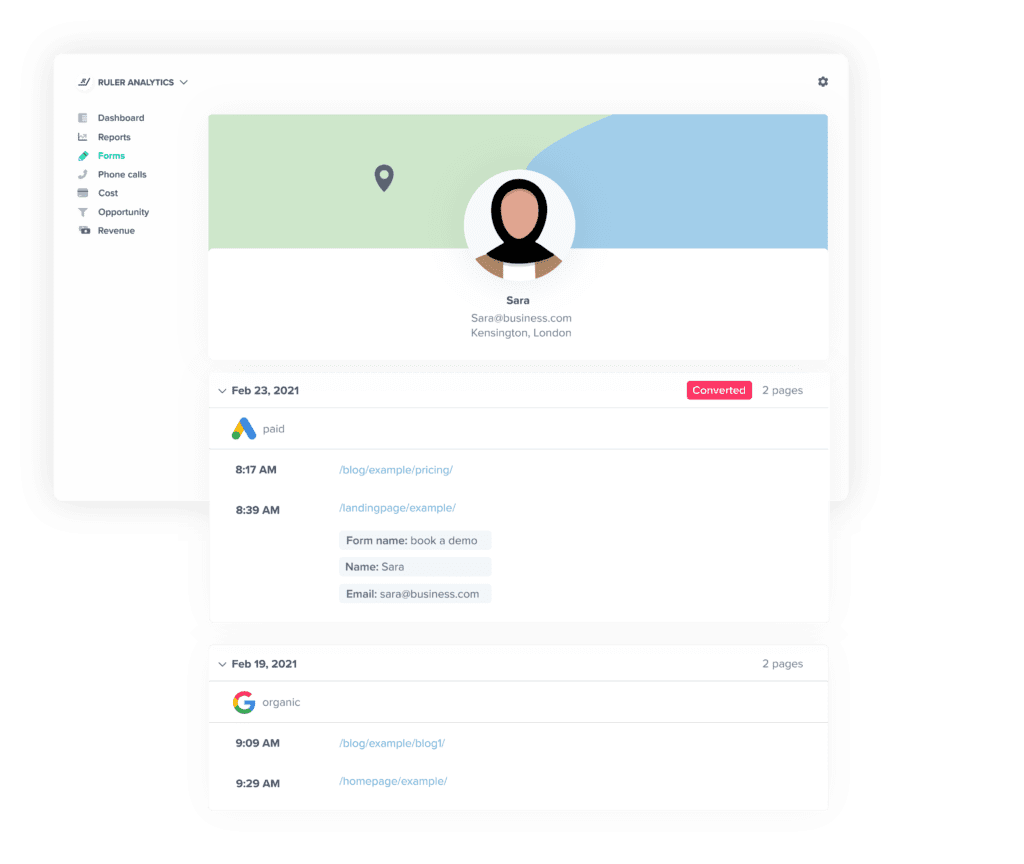
This full view of your leads means you’ve got more data at your disposal.
With better tracking comes better data. And attribution is no exception.
If you’re struggling to prove your worth, you’re not alone.
Lead tracking is hard. What’s even harder is proving a new lead came from your marketing initiatives. But with attribution, that difficulty no longer exists.
Here’s how it works.
We match your revenue back to your leads. So, direct in Ruler, you can see how much revenue each marketing channel has brought in. Even better, you can see the return on investment based on any associated costs with that channel.
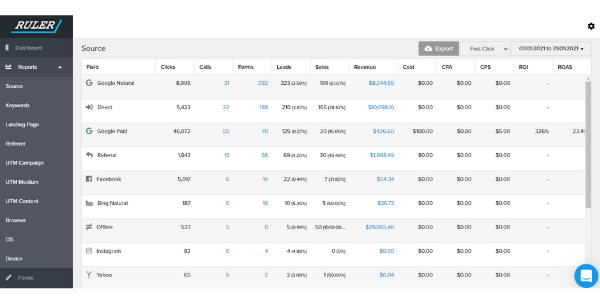
And if you don’t like viewing the data in Ruler (don’t worry, we won’t be offended), you can head to Google Analytics. Because that’s what we do when a lead closes into a sale. We fire the associated revenue and attribute it to the channel, campaign and keyword that influenced it.
So, you can go to your managers and say exactly how many leads marketing have driven in the past month. And, even better, you can say how much revenue you’ve earnt them.
Ever pitched trying something new and been told to bring data? How can you bring data before you’ve tried, right? And how can you track the effectiveness of channels like email or social when users are converting via hard-to-track methods like live chat or phone.
Well, with Ruler you don’t need to worry.
Pitch a new channel or a new campaign with confidence. Because with Ruler you can track it all. You’ll be able to quickly prove how well a channel or campaign is working to give yourself, and your manager, confidence.
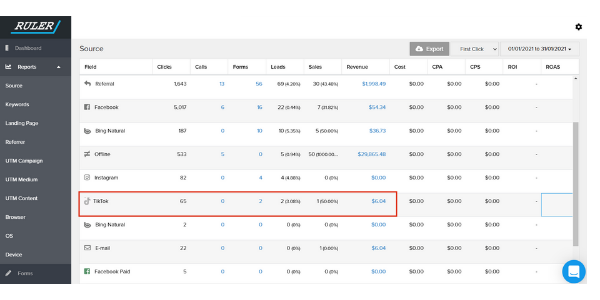
Marketing teams are always fighting a losing battle. It seems like there’s a new channel to master every week these days. But have no fear. You don’t need to stretch yourself to cover a new channel.
When you’re checking out your source referrals in Ruler, make sure to take note of those channels that aren’t converting so well.
That’s right, you heard us. It’s not all about the channels driving lots of revenue.
If you’re spending 2 hours a day on content for organic Instagram but it’s driving very low results in terms of traffic, leads and revenue, then realign your priorities.
By concentrating on the channels you know are working, you can optimise your time and by consequence, optimise your outputs.
Feed more into the channels that are already full of great potential leads and watch the revenue increase!
Getting sign off for more budget or new resources is always a scary ask. But sometimes, it’s necessary for growth.
Think about email marketing for example. There are plenty of great, free tools out there to get you started. But to get the most out of your email marketing, you’re likely going to need to fork out some money to get more features and really see some impact.
But remember, this doesn’t need to be a scary question. Especially not if you’ve already been using email for a while and you can see there’s a very high lead to sale close rate. That shows the content you’re sharing is working, you just need more support to get more out of it, right?
With Ruler, you can definitively prove what’s working and so create a pitch not even a Dragon would say no to.
We’ve touched on lead quality already, but it’s so key for any marketer. Driving lots of leads is not enough. In fact, it’s pointless if you have no idea if they’re converting.
Imagine how much your sales team would love you if you consistently drove high-quality leads.
How do you find out lead quality, we hear you ask? Well, it’s simple. What’s converting highly in terms of lead to close rate?
Analyse your channels, your campaigns and your ads to better understand what is driving leads that go on to close into revenue. And we’re talking lots of revenue.
Let’s use an example.
You set two campaigns live across a few channels.
Campaign one drives 100 new leads, while campaign two drives 80.
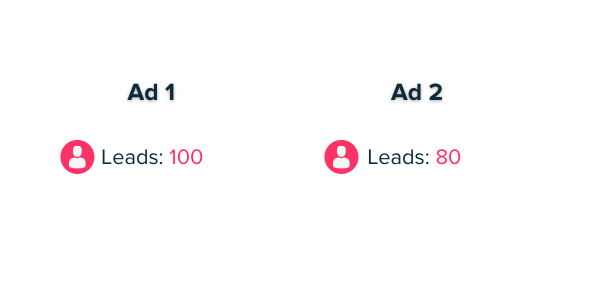
So campaign one did better? You’re onto us. This statistic doesn’t matter.
What matters is revenue.
Well, not just revenue when it comes to lead quality.
Campaign one drives 100 leads and £25,000 in revenue. Campaign two drives 80 leads and £18,000 in revenue. For the same cost. Under this lens, campaign one has done better because its cost per lead is less.
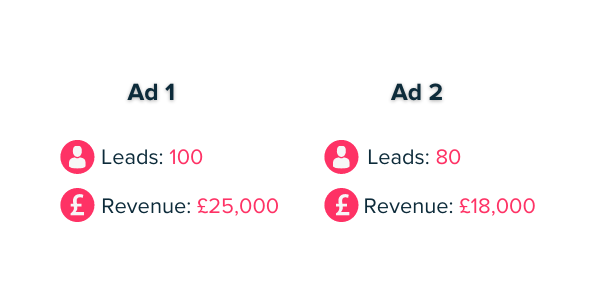
Well, we still don’t have the full picture.
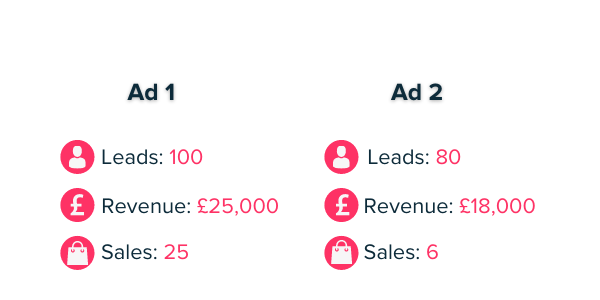
While campaign one has driven more sales and more revenue, they’re at a lower cost per sale. Meanwhile, campaign two has driven fewer leads and less revenue, but at a much higher cost per sale.
So which was more profitable? Well, it depends on how you look at it and which metrics matter most to you. But without Ruler, you will have come to many different conclusions due to the lack of data.
So how do you get more high-quality leads in your funnel? Well, the trick is to create a highly-optimised lead funnel.
Ruler can help with this in a number of ways.
In Ruler’s report, there’s the source report which will highlight which channels are driving new leads and sales.
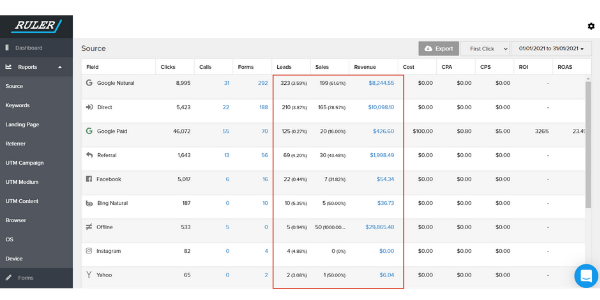
By using different attribution model types, you’ll be able to get better view of which channels work better for which stage.
From there, you can start to understand which channels work best to convert users for each stage of the buyer’s journey. You can then tailor your content to match this, whether that’s by using organic to create more SEO-friendly blogs and email for converting leads, or creating videos on YouTube for awareness and retargeting PPC for later down the funnel.
Similarly to sources, content is going to vary across stages. Top of the funnel content is going to look very different to that at the bottom of the funnel.
By using Ruler’s landing page report, you can see which blogs and pages are working across different content stages.
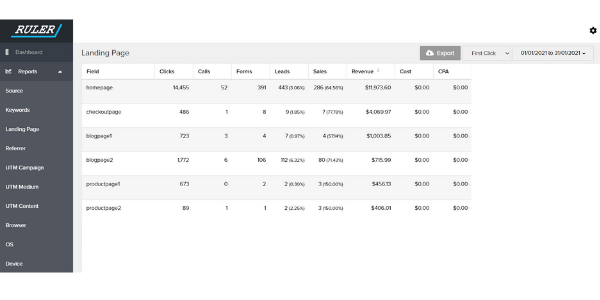
From there, for awareness at least, all you need to do is get more people onto that page!
Ruler’s opportunity report is a great asset for businesses to understand their pipeline.
Using set categorisations lifted from your CRM, you’ll be able to see the number of leads and their projected value by opportunity stage.
So, not only can you report back on the actual figures you’re marketing has influenced, but you can also project your figures too.
Related: How to upload your Opportunity data from your CRM
Hopefully, that helps you better understand how to optimise your marketing strategy with Ruler Analytics.
Here’s a quick recap of how Ruler works.
Ella searches online and clicks on your ranking blog. Ruler tracks her marketing data and her interactions with your website.
She visits a second time via a direct search. Again, Ruler tracks Ella, adding this marketing data.
Ella returns to your site a few days later via an organic search. There, she converts via a form fill by downloading an eBook.
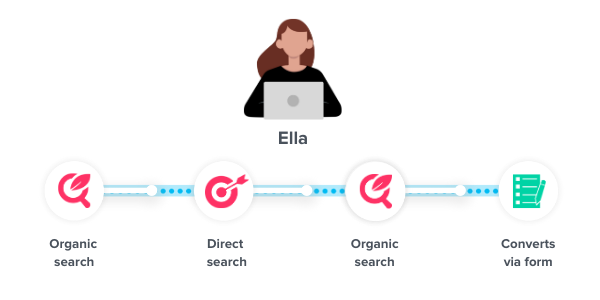
At this point, Ruler fires all of the lead and marketing data held on Ella over to your CRM.
Later, Ella receives a marketing email and converts offline.
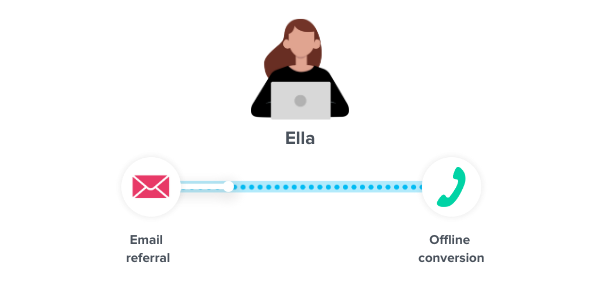
The salesperson she speaks to updates her file in your CRM. Ruler fires again, scraping the revenue data and firing it to your email software and Google Analytics.
There, the revenue is correctly attributed to the relevant channels.
Ruler can integrate with thousands of applications. So, whatever you use to drive more leads via your marketing, we can work with.
Check out our full integrations list or see how easy it is to get set up with Ruler. Or, if you’re not already using Ruler, book a demo with us. See our data in action and how you can use this tangible evidence to optimise your paid advertising strategy.